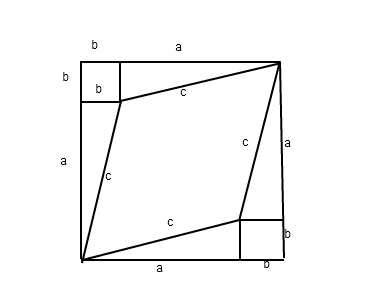Let's build up to this. Suppose you know about x and y coordinates in the Euclidean plane, but to you they're just arbitrary labels for points, like zip codes or phone numbers. Then suppose someone tells you that observers can view the plane from different directions, but the laws of geometry stay the same. You now know that x and y aren't really separate. Under a 90-degree rotation, x could become y, and y could become -x. There is a quantity that is conserved under these rotations, which is the distance $\sqrt{\Delta x^2+\Delta y^2}$ defined by the Pythagorean theorem. All observers agree on this.
Now let's consider relativity according to Galileo and Newton. All observers agree on time intervals. However, they disagree on other things, such as distances. If I tap the "b" key on my keyboard twice, like this, bb, I say that the distance between those two events is zero. But a Martian looking at me through a telescope says the earth is spinning and revolving around the sun, so the distance between b and b was a hundred meters. Only observers at rest relative to one another agree on Pythagorean distances, but they do agree on these regardless of rotation. Just as in the example of the Euclidean plane we saw that rotation could mix x and y, in Galilean relativity we see that an observer's motion along the x axis mixes x and t according to $x'=x-vt$, $t'=t$.
Learning about Einstein's second postulate is like learning about the rotational symmetry of the Euclidean plane. It tells you that there was a higher degree of symmetry than you believed. It says that there is something that all observers agree on. Just as all observers in the Euclidean plane agree whether points A and B are 1 meter apart, all observers in a relativistic universe agree on whether two events A and B could represent the emission of a ray of light from A and its reception at B. In this case we say that the separation of A and B is lightlike. Let the difference between A and B's x coordinates be $\Delta x$, and so on, and for convenience let's use units of seconds and light-seconds, so that c=1, and we don't have to write factors of c. If a certain observer says A and B are lightlike in relation to one another, then that observer has $\sqrt{\Delta x^2+\Delta y^2+\Delta z^2}=\Delta t$.
An observer in a different state of motion will measure different values for these deltas, and as in the Euclidean and Galilean examples, the equations relating these deltas have to be linear. (A nonlinear relationship like $x'=x^2$ would violate the homogeneity of space.) The details of the actual equations and how they're derived isn't really the topic here. But we would like to find something that both observes agree on, just as observers in the Euclidean plane agree on distances, and observers in a Galilean universe agree on times.
We might hope that they would agree on the difference $\Delta t-\sqrt{\Delta x^2+\Delta y^2+\Delta z^2}$. If they did agree on this, then they would certainly agree on whether events were lightlike. But this conjecture doesn't work. One easy way to see this is with a variation on the well-known thought experiment of the train and the two lightning flashes. If the flashes are simultaneous in the dirt's frame, then observer K in a train going in one direction sees $\Delta t<0$, while observer K' in a train going the opposite way sees $\Delta t>0$. Since K and K' agree on $\Delta x$, ... but disagree on the sign of $\Delta t$, they disagree on the value of the expression conjectured above.
What does turn out to work is the difference $\Delta t^2-\Delta x^2-\Delta y^2-\Delta z^2$. We can see that it doesn't fall prey to the same counterexample of the trains, because the sign of $\Delta t$ is irrelevant.
By analogy with the Euclidean unification of the x and y axes, we think of this as a kind of unification of the t axis with the x, y, and z axes in relativity. The occurrence of the + sign in the time term and the - signs on the spatial ones is called the signature. The distinction between a signature like ++++ and one like +--- is real, and says that time is not exactly the same as a spatial dimension. The distinction between +--- and -+++ is not physically significant, and different people use different conventions.



